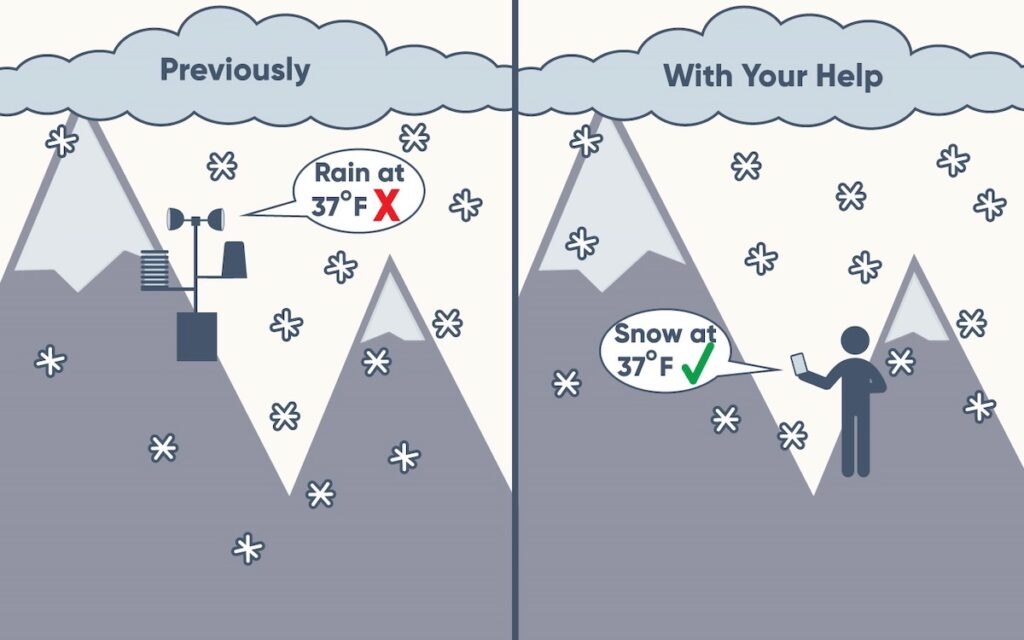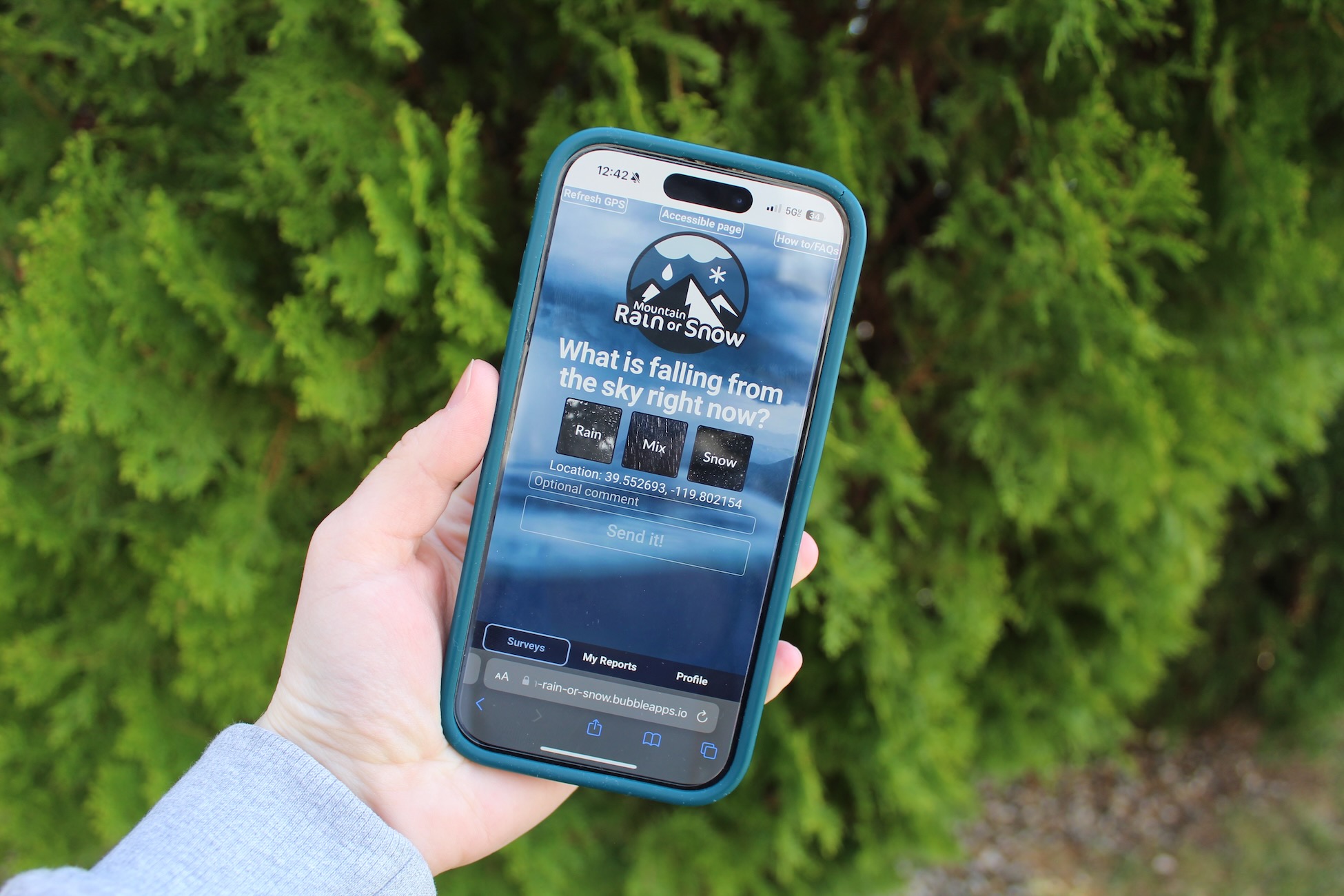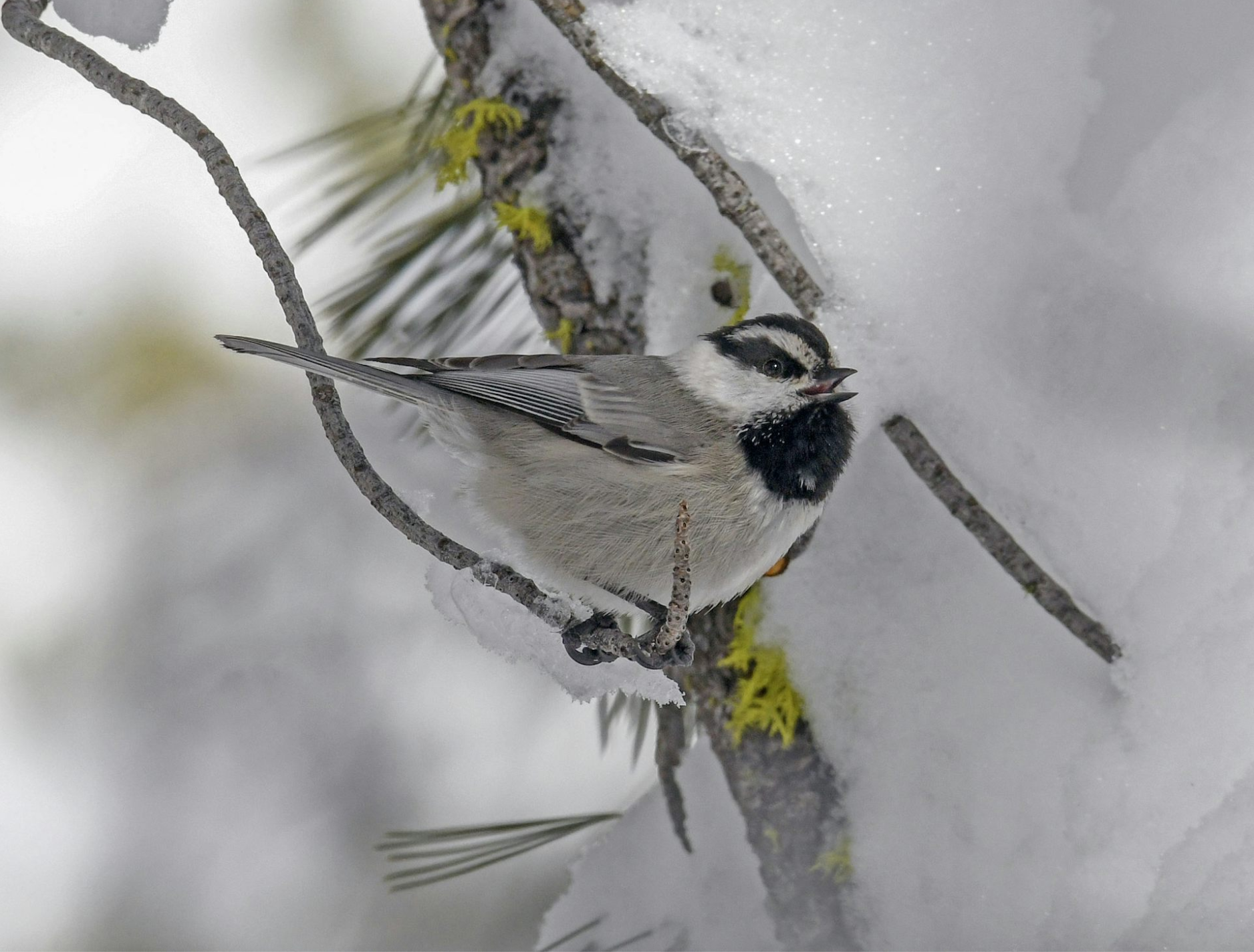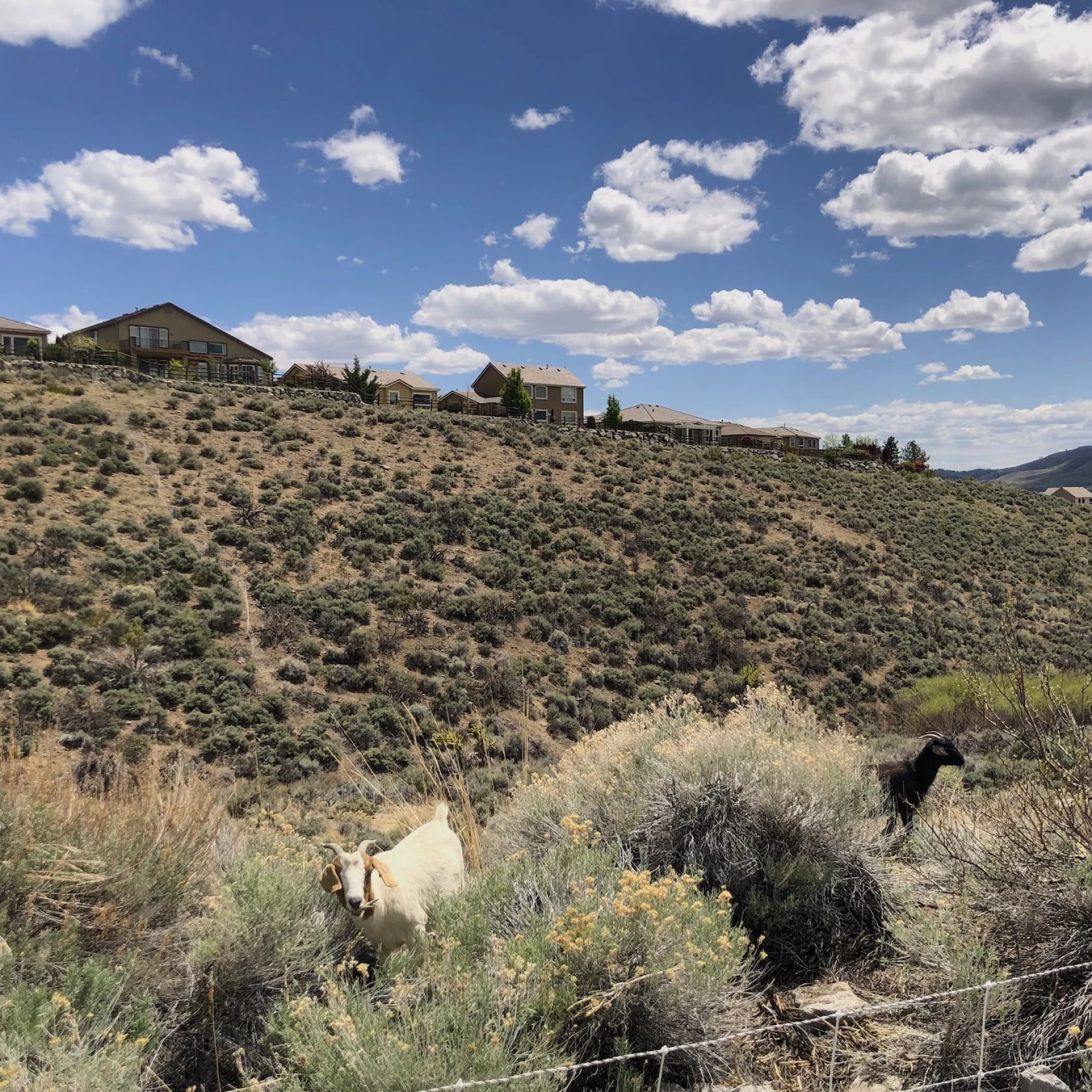Determining whether it’s raining or snowing in the Reno-Tahoe region might seem like an insignificant task—just step outside, extend your hand, and observe your surroundings. However, this seemingly simple act of on-the-ground observation is what local researchers are depending on to monitor precipitation trends during storm events in the Sierra Nevada and other western regions.
The Mountain Rain or Snow program, launched in 2020 by researchers at the Desert Research Institute, is a citizen science initiative that leverages community participation to improve precipitation monitoring with a specific focus on the rain-to-snow transition in mountainous areas.
“If you’ve ever looked out the window in a car or at home and noticed that it’s snowing at 35 or 36 degrees Fahrenheit, you’ve experienced the phenomenon that is at the heart of this project,” said Associate Research Scientist Meghan Collins of DRI, who leads the engagement strategy portion of the program.

While weather monitoring largely relies on remote sensing technologies, these systems are not always entirely accurate, according to Guo Yu, an assistant research professor at DRI. These systems are especially inaccurate in temperatures that are just above freezing and in mountain regions such as Tahoe. That’s where the public comes in.
The program leverages a web-based app, which prompts participants to indicate whether it is currently raining, snowing, or a mix between the two at the time of their submission.
“Since we have a continued contribution of citizen science data, we can use that as a “ground truth” to validate those satellite-based products,” said Yu. “So I compile our citizen science data with three very popular NASA precipitation products.”
The program works to compare the data they receive from citizens to NASA monitoring technologies to assess how accurately NASA is estimating precipitation phases. They also send their data to forecasters at the National Weather Service.
Understanding where and when rain transitions to snow is an important area of research for scientists, as it affects various hydrological factors such as flooding or how much water we will have access to from snow melt.
“Trying to predict exactly where on the mountain it’s going to be raining versus snowing has a lot of hydrologic impacts like you’re seeing for flooding, but we also really want to know how much snow is falling where because that snowpack that forms is a frozen reservoir for our water resources that gets us through our summer drought,” said Anne Heggli, a staff research scientist at DRI’s Western Regional Climate Center.

The transition is also vital for hazard mitigation and weather forecasting. Driving in snowy conditions poses significantly greater risks compared to rain, a fact well known to Reno-Tahoe residents accustomed to navigating Donner Pass during the winter.
Participants sign up for the program by texting a regional keyword to the project’s phone number, ”winter,” for the Sierra Nevada region—and are kept engaged through text message alerts sent out during storms. The application is designed to be easy and quick to participate in, and users are encouraged to report whenever there is snow or rain in the air.
“It takes 30 seconds, so the 30 seconds that you spend has built into thousands and thousands of data points,” said Collins. The project has acquired close to 50,000 data points over the last four seasons, representing places where an observation was made, which researchers have used to monitor and learn about precipitation events.
With over 500 dedicated observers currently in the Sierra Nevada region, the project has acquired a lot of on-the-ground data about rain-snow transitions. The storm that passed through the Reno-Tahoe area in early March garnered a lot of responses from citizen scientists, which Rain or Snow researchers were eager to receive following a slow start to the snow season.
“This last storm was a really great opportunity for us because we had such high confidence in the forecast to engage our Mountain Rain or Snow observers and really rally those observations all the way from the Pacific Northwest,” said Heggli.
More information:
To learn more about the Mountain Rain or Snow project, visit: https://www.rainorsnow.org/
Sydney Peerman is a senior in the Reynolds School of Journalism and a science reporter for the Hitchcock Project. She is majoring in journalism with a minor in environmental studies and political science.






